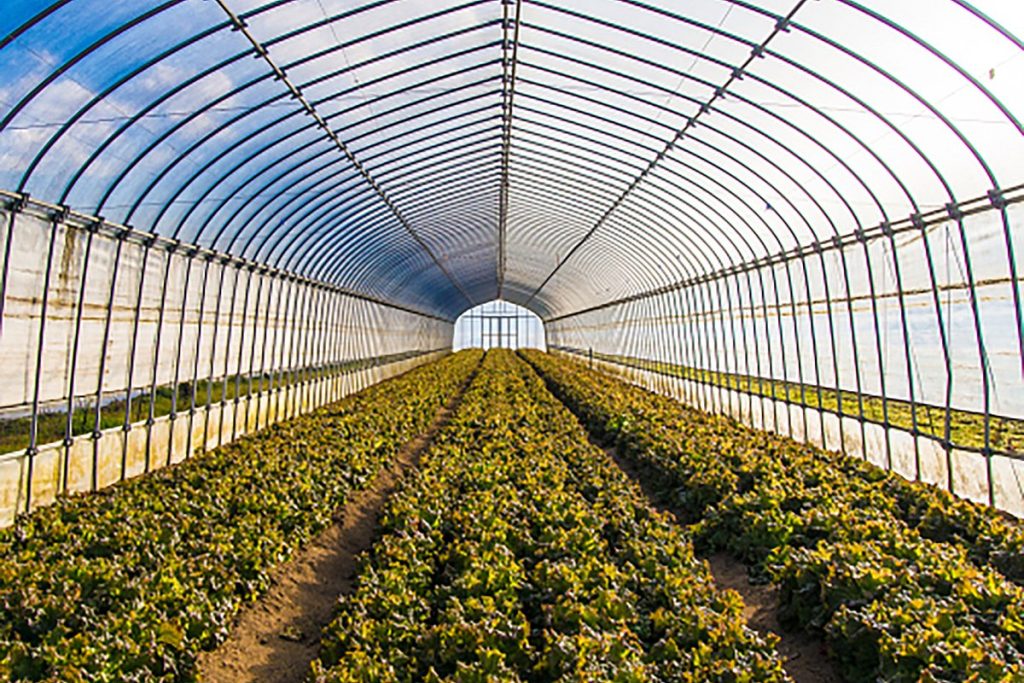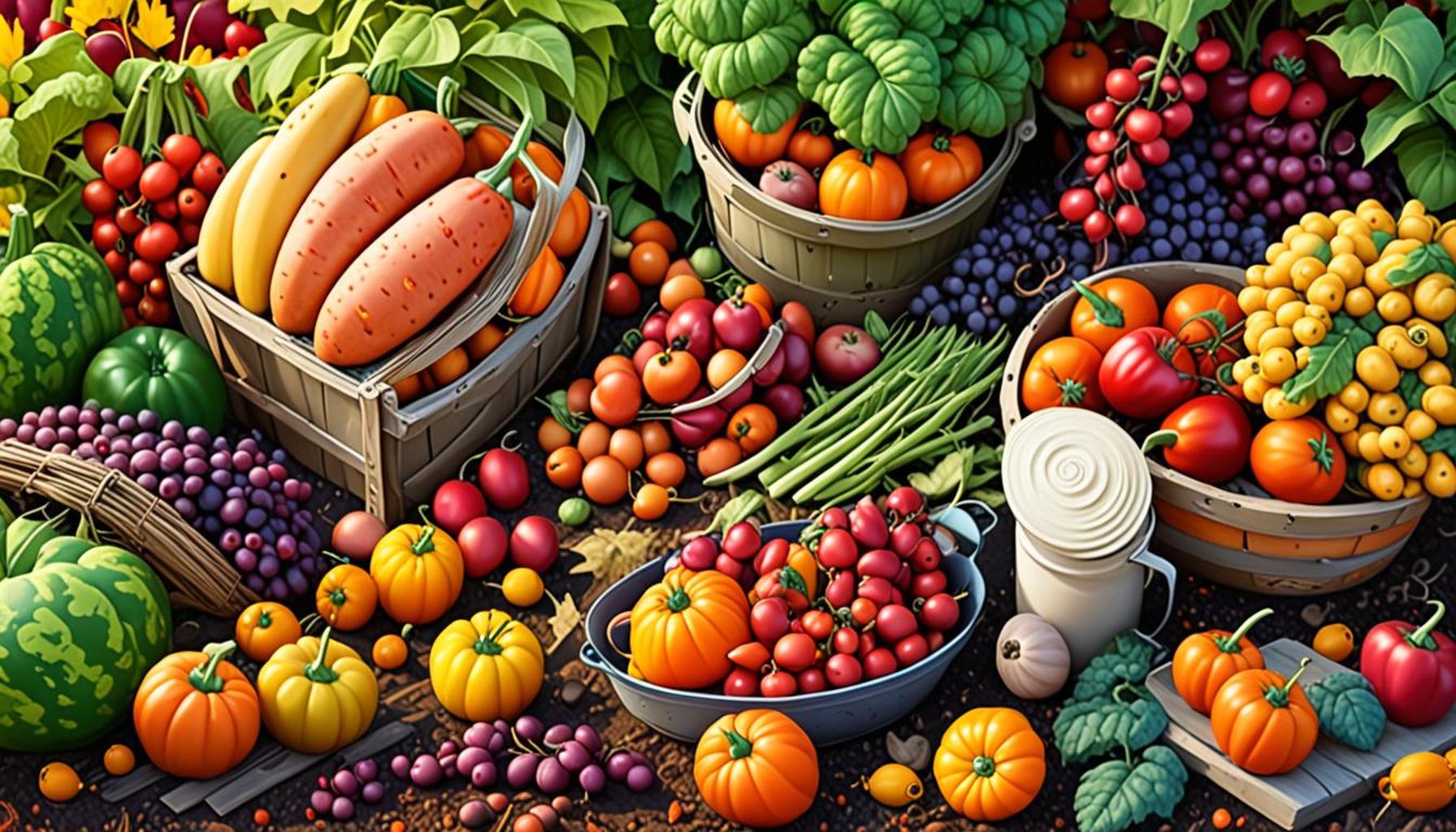Synchronized Harvest: Strategies to Increase Productivity in Small Gardens

Unlocking Garden Potential
In small gardens, every inch counts. Achieving a bountiful harvest requires not just effort, but a strategic approach to planting and caring for your plants. Synchronized harvest is an innovative method that can significantly boost productivity, enabling gardeners to maximize their limited space. This technique not only enhances yield but also leads to a more sustainable gardening practice that can be particularly beneficial for urban gardeners who might feel constrained by their surroundings.
Why Synchronized Harvest?
This technique involves timing the growth and harvesting of different plants to coincide with one another, allowing for efficient use of resources and space. For instance, a gardener may plant fast-growing radishes that mature in just a few weeks next to slower-growing carrots, creating a harmonious and productive environment. By interlinking the growth cycles of various crops, you can make the most out of a small plot. Consider these key aspects:
- Seasonal Overlap: Choose crops that mature at similar times. For instance, pairing late spring lettuce varieties with early summer herbs such as cilantro can ensure that your garden is continuously producing food.
- Companion Planting: Pair plants that benefit each other, such as tomatoes and basil. Not only do these two enhance each other’s growth, but basil can also help in repelling pests that typically afflict tomatoes.
- Successive Planting: Stagger planting schedules to ensure continuous harvest throughout the growing season. A classic example is sowing peas every two weeks for a steady supply well into the summer.
Benefits of Synchronized Harvest
Implementing synchronized harvesting techniques can lead to a range of advantages that enhance both the gardener’s experience and the health of the garden. These benefits include:
- Improved Yield: Increase your output without expanding your garden. Utilizing vertical gardening solutions, such as trellises or hanging planters, can further amplify yield by allowing for multiple layers of growth.
- Resource Efficiency: Optimize water and nutrients through strategic planting. By grouping plants with similar water needs together, you can reduce waste and ensure each plant gets the nourishment it requires.
- Enhanced Biodiversity: Foster a healthy ecosystem in your garden. This is vital for maintaining soil health and encouraging beneficial insects that can aid in pest control.
As you dive deeper into the world of synchronized harvests, you will uncover various methods tailored to your specific garden needs. Whether you are growing your produce on a balcony in New York City or using a backyard plot in the Midwest, strategies like these can help you to yield a fresh and delightful harvest. Get ready to transform your small garden into a productive paradise with the principles of synchronized planting and harvesting.
DISCOVER MORE: Click here for great tips on water reuse in gardening

Maximizing Space and Yield
In the age of urban gardening, small spaces can often lead to big dreams for gardeners. This is where the concept of synchronized harvest shines—a strategy that not only salvages every square foot but also transforms the challenges of limited space into opportunities for a thriving garden. By employing synchronized harvesting techniques, gardeners can effectively plan and create an ecosystem conducive to growth and production. Let’s explore how to uncover the best practices for maximizing yield in your small garden.
Planning for Plant Synergy
The foundation of successful synchronized harvesting lies in understanding how different plants interact with each other. This synergy can make or break your garden’s productivity. Start by considering the following approaches:
- Growth Rate Compatibility: Choose plants that will not outgrow or overshadow one another. For example, pairing short spinach with taller pole beans allows both species to thrive without competing for sunlight.
- Root Depth Awareness: When selecting crops, be mindful of their root systems. Shallow-rooted plants like lettuce will benefit from being planted with deeper-rooted plants, such as carrots, which can access nutrient layers the lettuce cannot.
- Harvest Timing Knowledge: Understanding when different plants are ready for harvest is crucial. Incorporating fast-maturing crops like radishes can create space for slower-growing vegetables like beets, allowing for a continual planting cycle.
Implementing Crop Rotation
Crop rotation enhances soil health and can be a vital part of your synchronized harvest strategy. By rotating crops, you reduce the risk of pest build-up and soil depletion. Here are key tips:
- Follow the Plant Family Rule: Rotate crops within different families. For instance, after harvesting legumes, follow with a brassica crop such as kale, which benefits from the nitrogen left in the soil.
- Use a Planning Calendar: Develop a planting calendar specific to your local climate. In USDA Hardiness Zones throughout the United States, such as in zones 5 to 8, understanding frost dates can improve your timing with crop rotations.
- Monitor Soil Health: Keep an eye on soil quality with regular testing. Adding organic matter after harvest can prepare the ground for your next crop, enhancing productivity and sustainability.
As you engross yourself in synchronized harvesting and planning for plant synergy, remember that working with nature rather than against it will lead to more productive outcomes. By thoughtfully arranging your small garden with strategy and purpose, you can create a veritable food haven that enriches your culinary experience and contributes to your health and well-being. The next sections will delve deeper into practical tools and methods, ensuring you are well-equipped to take full advantage of your gardening space.
| Advantage | Explanation |
|---|---|
| Maximized Space Utilization | By synchronizing harvest times, gardeners can employ companion planting, allowing different crops to thrive together, thereby enhancing yield without expanding garden size. |
| Reduced Pest and Disease Pressure | Implementing a synchronized harvest strategy allows for crop rotation and timely harvests, which can minimize the chances of pest infestations and plant diseases. |
Synchronized harvest not only encourages efficient crop management but also optimizes the resources available for small gardens. Understanding which plants to sow in accordance with others can transform your garden into an ecosystem that thrives on synergy. Moreover, adopting such strategies fosters an environment conducive to organic gardening practices. Local climate considerations combined with seasonal adjustments enhance the timing of planting and harvesting. Reading up on peer-reviewed studies or expert blogs can yield further insights into optimizing your gardening techniques, ensuring that you reap the maximum benefits from your small garden, regardless of its size. Exploring advanced techniques such as intercropping and vertical gardening can also lead to sustainable practices that support higher production levels. The potential for increased yield is vast, hinting at the exciting possibilities inherent in synchronized harvests. Stay tuned to dive deeper into these innovative strategies!
LEARN MORE: Click here to enhance your soil health knowledge
Optimizing Techniques for Season Extension
Creating a productive garden in a small space involves more than just strategic planting and crop rotation; it also requires leveraging techniques that extend the growing season. Approaching your garden with a mindset geared towards maximizing every moment of sunlight and warmth can lead to increases in yield and crop diversity. Here are some key strategies to consider:
Utilizing Vertical Gardening
When space is limited, vertical gardening offers an ingenious solution. By choosing vertically-growing plants, you can utilize otherwise unused layers of growing space. Here’s how:
- Vertical Plant Supports: Install trellises, arches, or even hanging baskets to allow vining plants like cucumbers, peas, or tomatoes to climb. This not only saves ground space but also facilitates better air circulation and sunlight exposure, leading to healthier plants.
- Stacked Planters: Consider using tiered planter boxes to maximize the vertical space in your garden. These can hold a variety of herbs or strawberries, making for an eye-catching and productive garden structure.
- Incorporating Wall Gardens: Wall-mounted gardens are not just functional; they can serve as stunning decor. Using panels filled with pockets for small plants will allow you to grow salad greens, herbs, or succulents, further optimizing your available square footage.
Employing Season-Extending Tools
To truly maximize productivity, gardeners should explore season extension tools. These tools can ensure a head start in spring and prolong harvests into fall and winter:
- Row Covers: Lightweight fabric row covers provide a protective layer against frost while allowing sunlight and moisture to penetrate. They can assist in warming the soil early in the season, making them an invaluable asset for small gardens.
- Cold Frames: Building a cold frame can extend the growing season by trapping heat and sunlight. These unheated, greenhouse-like structures allow you to sow seeds earlier in the spring and even grow some vegetables over the winter months.
- Hoop Houses: Larger than cold frames, hoop houses can provide an affordable and effective greenhouse solution. They create a micro-climate that supports the growth of heat-loving crops even in cooler months, drastically increasing seasonal yield.
Using Companion Planting
Incorporating companion planting techniques can lead to better pest control and improved plant health, significantly enhancing productivity in a small garden setup. This method involves strategically pairing plants that benefit each other:
- Mutualistic Relationships: For instance, planting marigolds alongside tomatoes can fend off nematodes and deter pests like aphids. Similarly, growing basil with peppers can increase yield while enhancing flavor profiles.
- Shade and Protection: Taller plants like corn can provide partial shade for shade-loving crops like lettuce or spinach, allowing for diverse plant selection even in a small area.
- Maximizing Nutrients: Interplanting legumes with heavier feeders like zucchini not only makes use of space but also enriches the soil with nitrogen, creating a sustainable growth cycle.
Implementing these season extension and companion planting strategies can significantly improve your synchronized harvest approach. These techniques not only enhance your garden’s productivity but also create a diverse and resilient growing environment that keeps yielding fresh produce for an extended period.
DIVE DEEPER: Click here to discover more about native plants for your garden
Conclusion
In the quest for a bountiful harvest from a small garden, embracing the concept of synchronized harvest is essential. By employing strategic methods such as vertical gardening, using season-extending tools, and practicing companion planting, gardeners can substantially enhance productivity and maximize their limited space. The integration of these techniques fosters a healthier, more diverse growing environment that not only increases yields but also promotes sustainable gardening practices.
Moreover, understanding the nuances of plant interactions—where certain species thrive alongside others—creates a vibrant ecosystem that can yield both nutrition and aesthetic value. With the U.S. climate varying across regions, tailoring your approach based on local conditions while experimenting with crops that grow well together can further refine the synchronized harvest process.
Ultimately, the journey of gardening in limited spaces can be immensely rewarding, as each yield represents not only effort but also the potential to deepen one’s connection with nature. As you cultivate these strategies, consider documenting your experiences and reflecting on what works best in your unique garden. By sharing insights and tips with fellow gardeners, the community can collectively benefit, leading to greater productivity and sustainability in small garden plots nationwide.
In conclusion, investing time in mastering synchronized harvest techniques will undoubtedly usher in a new era of productivity, making small gardens not only viable but thriving ecosystems that provide fresh produce throughout the growing season and beyond.



